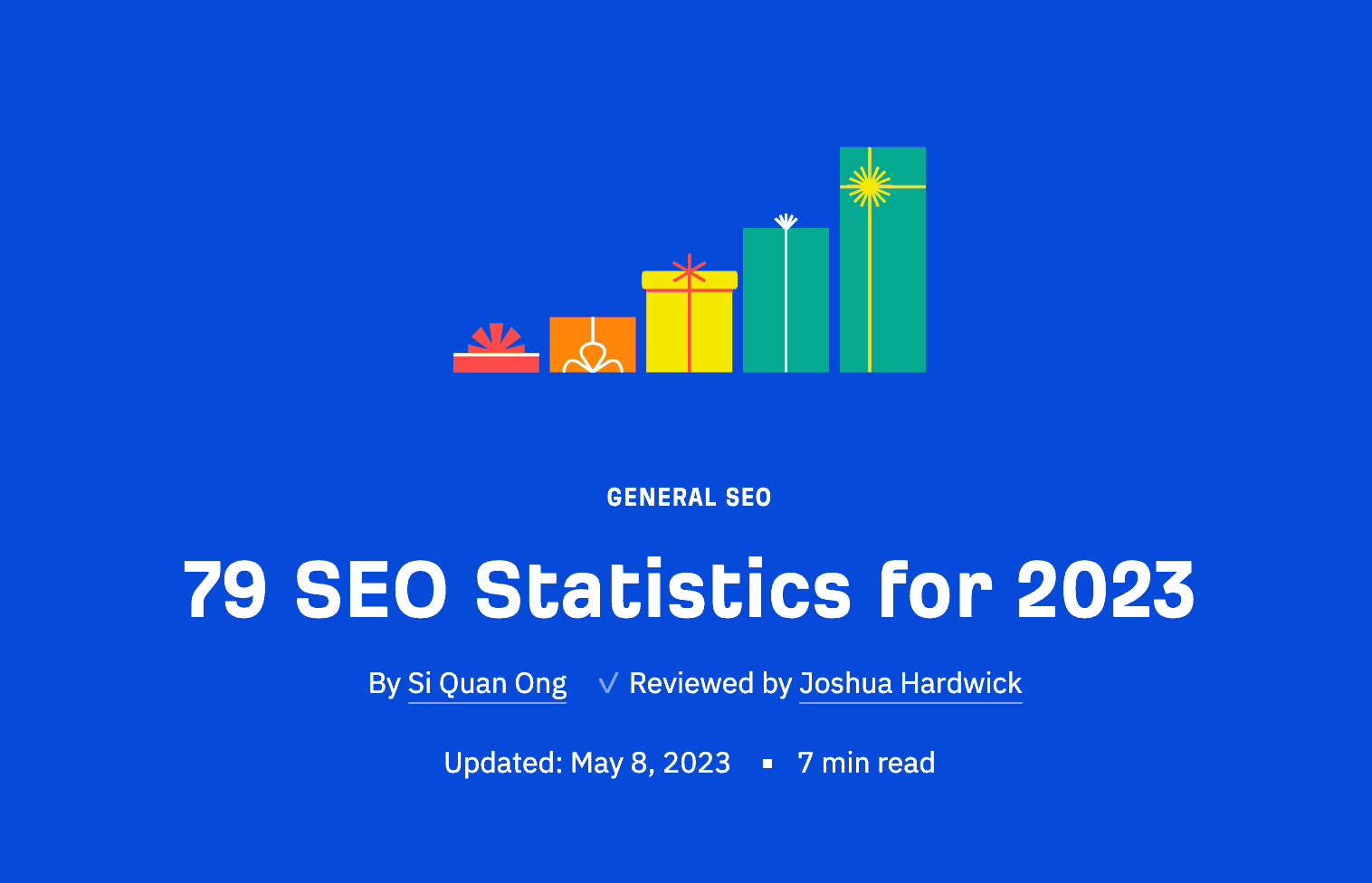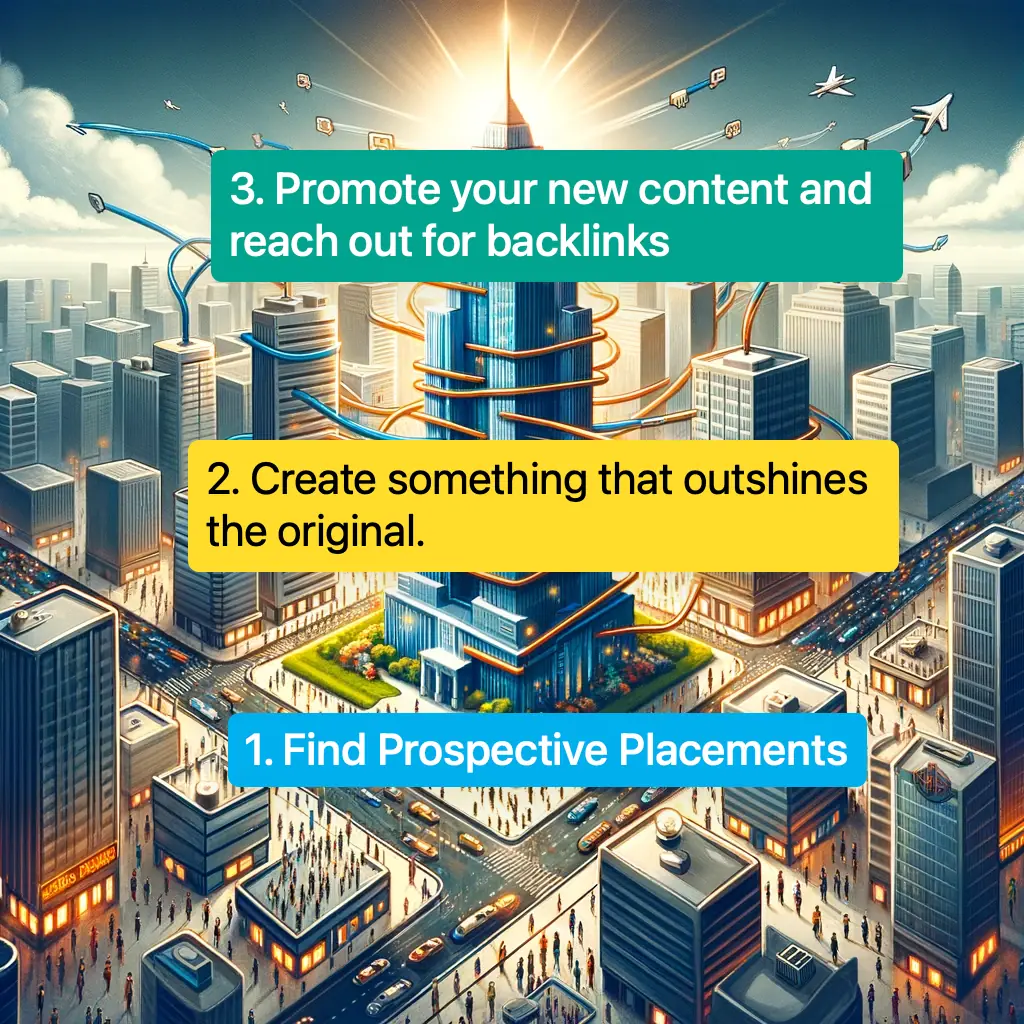White-hat link building. Black-hat link building. Gray-hat link building. What’s with all the hats?
If you want to develop an SEO strategy, trying to navigate your way through all the info out there can be intimidating. You know links are important to the success of your website, but how do you know if you are going about it the right way?
In a nutshell, white-hat link building is the best way to build links to your site without incurring the wrath of Google’s algorithm. If it’s done right, your website’s authority will grow and organic traffic will flow, increasing the online exposure of your business.
What exactly does link building the right way look like? Well, forget about mass automated emails, PBNs, and keyword stuffing, for a start.
We’re going to cover everything you need to know and more. Let’s get started with a quick definition of what exactly white-hat link building is.
What Is White-Hat Link Building?
In the early Wild West days of the web, link building was a free-for-all. It wasn’t unusual to find a site ranking at the top of the search engine results that was little more than the same keywords repeated over and over again.
It was keyword stuffing to the extreme and it worked! Link schemes and link farms were the order of the day. Black-hat tactics like these were everywhere.
Thankfully, those days are long gone. Google’s gotten better at identifying spammy websites that offer little value to the visitor. In today’s SEO (Search Engine Optimization) landscape, ethical link building or white-hat link building is essential for success.
White-hat link building includes the creation of great content that offers value, using content marketing, building popular one-of-a-kind resources, and guest blogging, to name a few effective strategies. It’s about building your online presence the right way by attracting natural backlinks and organic traffic without taking unethical shortcuts.
The Importance of Ethical SEO Practices
If you were to hop back in time somewhere between 2005 and 2010, you’d be greeted by a different online world. White-hat backlinks were hard to find and concepts such as keyword stuffing, cloaking, site redirects, duplicate content, and invisible keywords were commonplace link building techniques. That was before the introduction of Google’s Panda update in 2011, which shook the online world.
Suddenly, sites at the top of the rankings saw their traffic disappear, or, worse yet, they were completely delisted for violating Google’s new guidelines. They weren’t producing relevant content.
It’s true, there’s nothing technically illegal about using some black-hat link building techniques, but if you’re caught, expect penalties. Building white-hat links may take more time, but think of it as an investment in your site.
It’s just not worth the risk. Nobody wants their site to disappear from the SERPs because they tried a few shortcuts frowned upon by Google and other search engines.
White-hat link building is hard work, but when followed to the letter, it works. Over the long term, your site will grow steadily, you will contribute to your digital PR, and your products and services will gain valuable exposure.
The Difference Between White-, Black-, and Gray-Hat SEO
When you look at the techniques used in white-hat SEO vs. black-hat and gray-hat ones, the difference between each method becomes clear. Popular white-hat link building techniques include:
- Guest posting on related sites for referral traffic
- Creating great content that attracts high-quality backlinks
- Broken link building
- Building linkable resource pages
- Long-term outreach and networking
- Gaining links through HARO (Help A Reporter Out)
SEO specialists using black-hat tactics are more interested in shortcuts than taking time to gain relevant links from other websites. They’re happy to pay for low-quality links or create private blog networks (PBNs). Black-hat SEO strategies may include stuffing as many keywords in an article as possible in an attempt to rank for those keywords.
Gray-hat tactics, as you’ve probably figured out, live somewhere between the lines of white-hat and black-hat strategies. They may include black-hat techniques to build links, as long as they’re hard to trace.
SEO specialists that go the gray-hat way, may pay for links to their site if offered to them during a cold outreach campaign, pay for positive reviews, or buy old domains with established authority to skip the line to organic growth. These are all techniques that are hard for search engines to track, so some websites use them to build their backlink profile more quickly.
Just as with black-hat link building, though, if Google detects that you are practicing these gray-hat techniques, you’ll lose your website traffic. It’s a big gamble for a short-term payoff.
Core Principles of White-Hat Link Building
A white-hat link building company will take the Google algorithm updates seriously and grow their sites organically with valuable content. They know that the best way to grow is through ethical practices that benefit the wider online community.
Choosing the white-hat path is the right move for your site, period. The focus should be on quality content, offering value, and building relationships with customers and site visitors.
Let’s explore what we mean by that in depth.
Prioritizing Quality over Quantity
It can be tempting to accept lucrative offers of backlinks for a low price, but this is a situation where “buyer beware” applies. Not all backlinks are created equal. The ones you’re being offered for a “small” cash investment are almost certainly spammy links. This can also concern backlinks that you don’t gain intentionally: negative SEO attacks with links from low-quality websites are not uncommon.
If you’re lucky, this type of link will do nothing for your rankings. However, it may cause your rankings to tank due to a Google penalty.
Site owners using white-hat techniques should instead work to build link equity naturally. The best practices include creating high-quality content, seeking out guest post opportunities, offering real value to visitors, and networking with others in their niche and related niches.
This is the most effective approach for sustainable growth. Concentrate on prioritizing top-quality links over large quantities of backlinks with low domain authority. Additionally, invest time and effort to monitor and manage your backlink profile; this way, you’ll detect low-quality inbound links and prevent potential issues.
Keep in mind that backlink relevance is critical. Generating links from a high-domain-authority fitness website to your wooden craft hobby site doesn’t make sense. They’re not related.
When using white-hat strategies, target backlinks from high-authority sites in your niche or related niches. For that wooden craft site, for example, you might seek out a link from a pottery site that’s also in the business of selling their creations online.
Here’s a quick recap of the best practices for building quality backlinks:
- Avoid buying spammy links
- Create high-quality content that sites will naturally link to
- Network with others in your niche
- Target links from sites in related niches
- Monitor your backlink profile with link building tools
Site owners who practice the white-hat strategies discussed above are more likely to experience sustainable growth. Always choose quality over quantity.
Building Relationships, Not Just Links
Establishing yourself in any niche can be challenging. Networking may not come naturally to you, but it’s a must if you want to succeed at white-hat link building. Start connecting with others in your niche through social media, forums, and even in the blog comment section of other sites.
Networking is a powerful tool in the link building world, but it does take time. Beyond the social tools we’ve looked at, proactive outreach (or “cold outreach”) is also a popular approach. It’s not an easy task. The potential rewards do make it worth it, though.
How do you build relationships this way that can bring you links?
Try searching for the relevant keywords in your niche and develop a list of websites with high domain authority that you’d like to connect with. Once you have your list from your keyword research, you could offer to write guest posts, send emails to website owners letting them know about your piece of content that would benefit their audience, or look for dead links on their site and offer to replace them with a link to similar content on your site.
There are many creative ways you can reach out to other websites in your niche for high-quality links. As long as you have something of value to offer them in return, you will eventually build quality links.
Relationship building this way takes time, so don’t expect a flood of inbound links to your site overnight. First, you have to develop a positive connection. Once you have that, these network connections will be more likely to link to your content naturally — in many cases, without even being asked.
Proven White-Hat Link Building Strategies
There are a few popular buzzwords when it comes to describing white-hat link building strategies. Terms such as natural and organic are two great examples that are popular with marketing professionals. Let’s look at the most effective white-hat backlinking strategies that fit this description, including:
- Content creation and promotion
- Guest post campaigns on reputable sites
- The skyscraper technique
- Broken link building
- Industry studies and original research
Content Creation and Promotion
Creating original content is the #1 white-hat method to encourage visitors to link back to your site. When we say content creation, we’re not talking about generic, basic stuff with nothing new to add to the online conversation.
You can’t just repeat what everyone else in your niche is saying. Being original gets you noticed, and that should be your number one priority.

The Ahrefs annual SEO statistics post is a great example. They release an extensive list of top SEO statistics every year, and it consistently ranks #1 because it’s original, it’s thorough, and because people love statistics!
Look for new insights you can offer, conduct original research, and share the findings in your article. The idea is to focus on providing original material every time you produce a piece of content. That’s what Google and its smaller competitors are looking for, and that’s what your visitors are looking for, too.
If you’re creating content for social media to drive traffic to your site, come up with something original. Don’t just post another cute kitten meme. As much as you may love those little fur balls, it won’t make your content stand out in a crowd.
Guest Posting on Reputable Sites
Guest posting on highly trusted sites is another great way to build backlinks naturally and gain referral traffic. The key takeaway here is that the guest post and the website in general need to be related to your niche.
Google gets suspicious if you have guest posts on a cooking site and your business sells high-tech drones. These two topics are completely unrelated and the search engines are likely to consider any link you gain from your guest post experience to be an attempt to manipulate your page rank. It’s a black-hat link building practice that risks long-term damage.
At best, they’ll ignore these types of guest posts and won’t consider them in your search engine rankings. At worst, you may see your page disappear from the SERPs altogether.
It’s not worth the risk. The best approach is to seek out guest posting opportunities in related niches that can lead to high-quality backlinks.
When you create quality guest posts for a reputable site in your niche, they will allow you to naturally link back to one of your own articles as long as it adds value to their readers. Google will reward this kind of white-hat link building strategy and that will help your overall search engine rankings.
The Skyscraper Technique

The skyscraper technique is one of the most powerful tools in every white-hat SEO link building toolbox. There are three main steps in the process:
- Identify top-performing content in your niche
- Improve on that content — create something that outshines the original
- Promote your new content and reach out for backlinks
Here’s an example.
Let’s say you want to rank for the keyword phrase “small business tools”. The first step is to type that phrase into Google’s search bar and identify the top-performing content for that query. Since the top results receive most of the traffic, you’ll want to pay close attention to the pages on the first page of search results.
Take note of common themes in each blog post and try to identify anything you think is missing from the current top performers. Your goal is to make something that answers the search query much better than anything on those pages.
Perhaps most of the articles on the SERP for “small business tools” are just basic listicles with a short paragraph describing each tool. You might want to expand upon that by including the pros and cons of each tool, adding a video walkthrough for how to use each one, or even suggesting alternatives in each case.
What you’re creating is a much more complete piece of content than anything previously available. That’s how the skyscraper technique works.
You’re building something that blows away the competition. Something that will stand out and get your content noticed. It’s easily one of the most effective methods for getting white-hat backlinks.
After that, it’s time for outreach. Time to spread the word about your new masterpiece.
Broken Link Building
There are thousands of links on the web that lead to nowhere. This might be because the site owner has moved a page or deleted it altogether, or because the site they linked to no longer exists. If you can find broken links like this, there’s a good chance you can use them for building links to your own site.
Start with a simple Google search for blog posts or other pages in your niche that could link to you. Use a link building tool to check if they are currently pointing to broken links. If they are, you’ve just identified another white-hat link building opportunity to help build your personal brand!
The final step is to reach out by email to the website owner of the page in question to make them aware of the broken links on their page. Let them know you have a great piece of content that can replace it. If your content is good enough, there’s a good chance they’ll gladly link back to your resource.
This is an effective way to build high-quality white-hat backlinks ethically and improve your search rankings for the target keyword. The end result of using these SEO techniques will be one more link in your backlink profile that will help your website’s ranking and potentially a good relationship with another website owner.
Industry Studies and Original Research
We’ve saved one of the most effective whitehat link building techniques for last — industry studies in your niche involving original research. They’re an invaluable tool for building white-hat SEO backlinks.
Social media is a great option for creating surveys you can use in this type of research, but cold outreach by email to industry professionals for direct input can be even better. You won’t get a response every time, but even a 10% response rate can provide you with valuable original material for your article.
However, this kind of content takes time. There’s no sugarcoating it — it’s a lot of work. The upside is it can lead to a lot of white-hat backlinks to your site. Google loves original content that genuinely helps visitors with a problem or provides them with valuable information.
A professional white-hat link building agency can help you build backlinks more efficiently. They can develop a comprehensive strategy that will include different tactics, so you can combine content creation with effective research, analysis, and outreach.
The Future of White-Hat Link Building
If there’s one thing we know about the future of white-hat link building, it’s that what works well today may not be as effective tomorrow. Search engines are improving and new technology is changing the rules of the web every day.
This we know for sure — Google’s algorithm is going to get better. It’s going to get harder and harder to game the system. Advances in AI will allow search engines to more easily identify black-hat and gray-hat techniques. So, informative, original content is going to outrank mediocre content built on shady practices.
Voice search is also going to continue to grow in popularity. That may reduce the importance of backlinks somewhat, but only marginally. It will be even more important to use comprehensive SEO strategies to build a successful website.
Conclusion
As tempting as it might be to take the shorter route to success using black-hat and gray-hat link building, it’s not worth the risk to your reputation or your traffic. White-hat link building takes time, but it leads to lasting results and stronger growth.
An ethical approach is the only sustainable way to tackle SEO. The search engine algorithms are always getting better. In fact, it’s estimated that Google tweaks its system thousands of times a year.
Build quality original content, establish lasting relationships in your niche, stay on the white-hat path, and your site will grow organically. If you want to expand the online market for your products or services, a white-hat link building service can help you do it.






